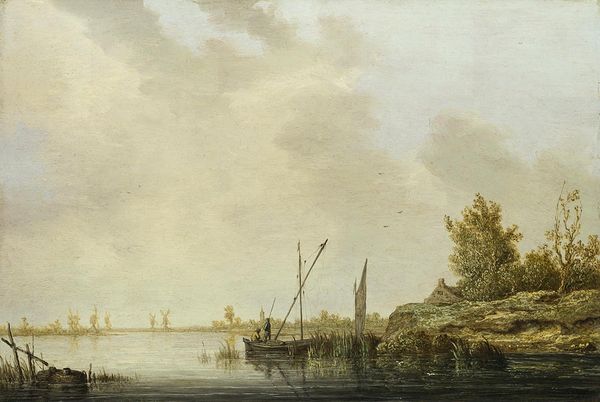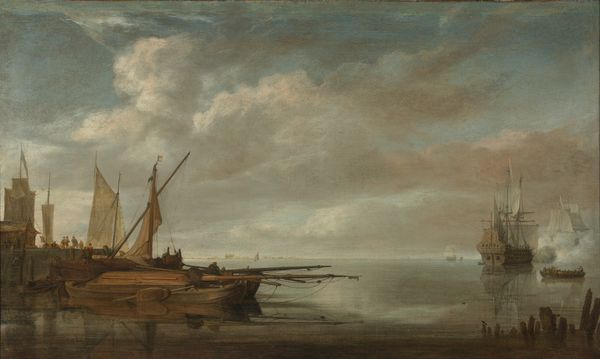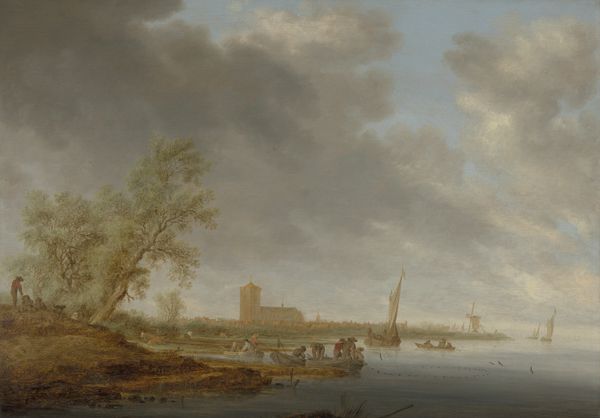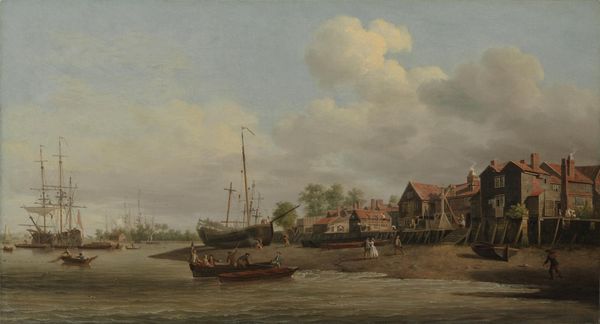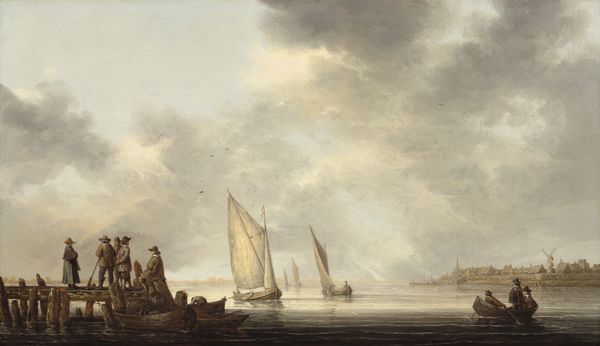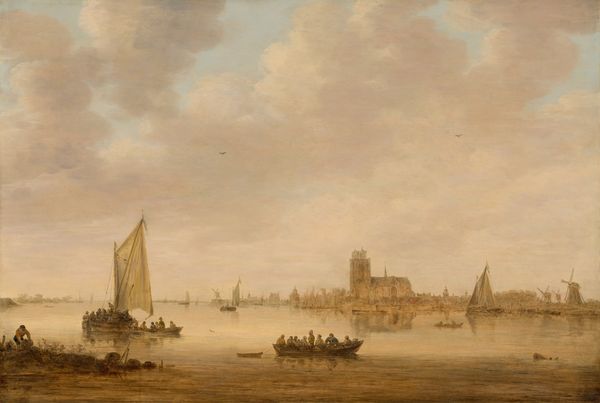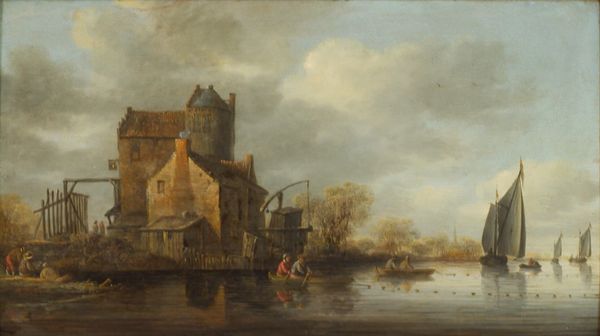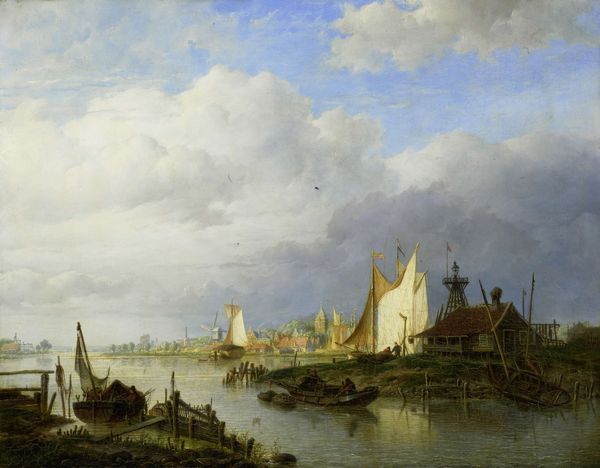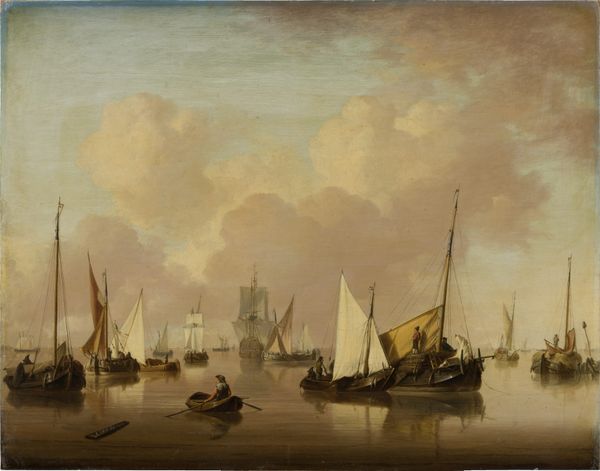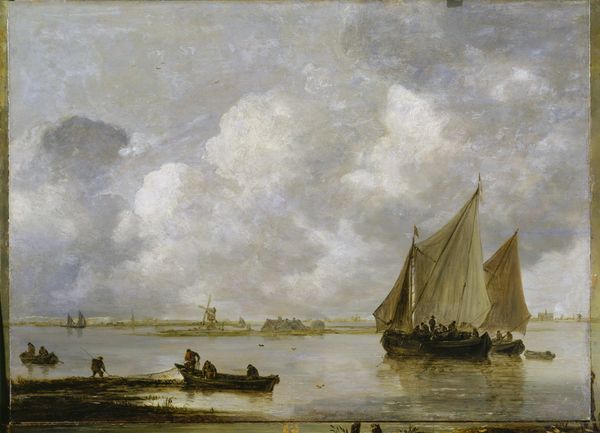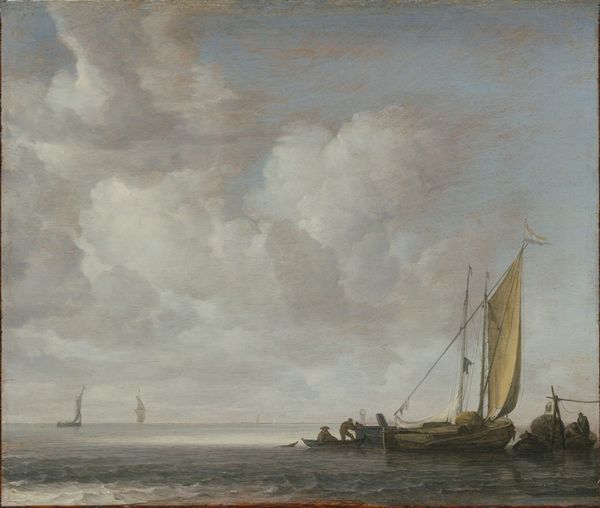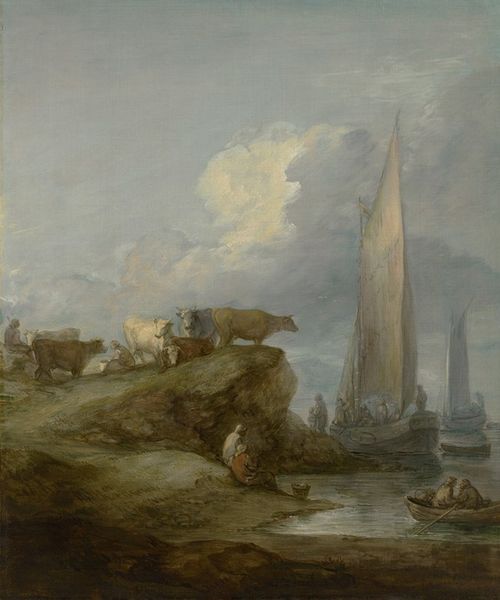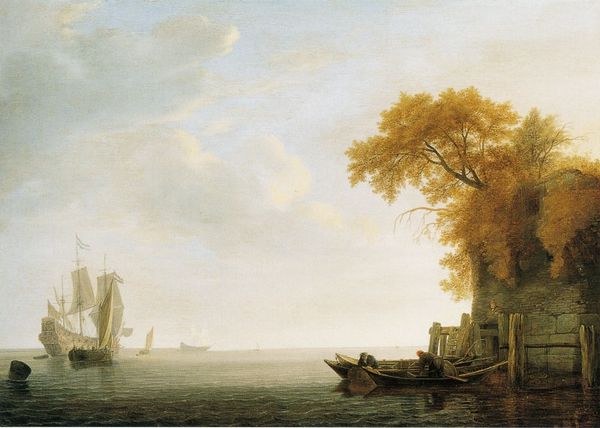
painting, oil-paint
#
dutch-golden-age
#
painting
#
oil-paint
#
landscape
#
oil painting
#
genre-painting
#
realism
Copyright: Public Domain: Artvee
Editor: Aelbert Cuyp's "The Ferry Boat," from around the 1650s, is rendered in oil on canvas. It depicts a serene river scene, yet something about the positioning of the boats creates a really interesting, almost unsettling, dynamic. What do you see in this piece from a formalist perspective? Curator: Certainly. I'm immediately struck by the composition. Notice how Cuyp has structured the painting around a series of verticals—the masts, the pilings—which are then counterbalanced by the horizontal expanse of the water and the implied line of the distant shore. It establishes a clear structural tension, would you agree? Editor: Absolutely. It almost feels like a grid, though a very softened, natural one. What about the use of light? Curator: The light, too, plays a crucial role in organizing the space. See how the subtle variations in tone on the water's surface delineate space, guiding your eye deeper into the canvas. Cuyp's manipulation of light isn't merely descriptive; it actively shapes our perception of depth and form. Also, examine the surface texture achieved with oil paint; how would you describe the handling? Editor: It looks quite smooth in areas, especially the sky, but much more textured and visible in the foreground, particularly on the wooden pier. So, is the contrast another part of that structural tension you mentioned? Curator: Precisely. The texture adds another layer of complexity to the spatial dynamics. It highlights the materiality of the painting itself, reminding us that this is not merely a window onto the world but a constructed object with its own inherent properties. Now consider, could the different textural elements contribute meaning that resides specifically within the work itself? Editor: I hadn’t thought of it that way before. Seeing it as a structured composition allows me to appreciate how deliberate each element is. Curator: Indeed. Formal analysis reveals the internal logic and complexity of the work, enriching our understanding and viewing experience.
Comments
No comments
Be the first to comment and join the conversation on the ultimate creative platform.
